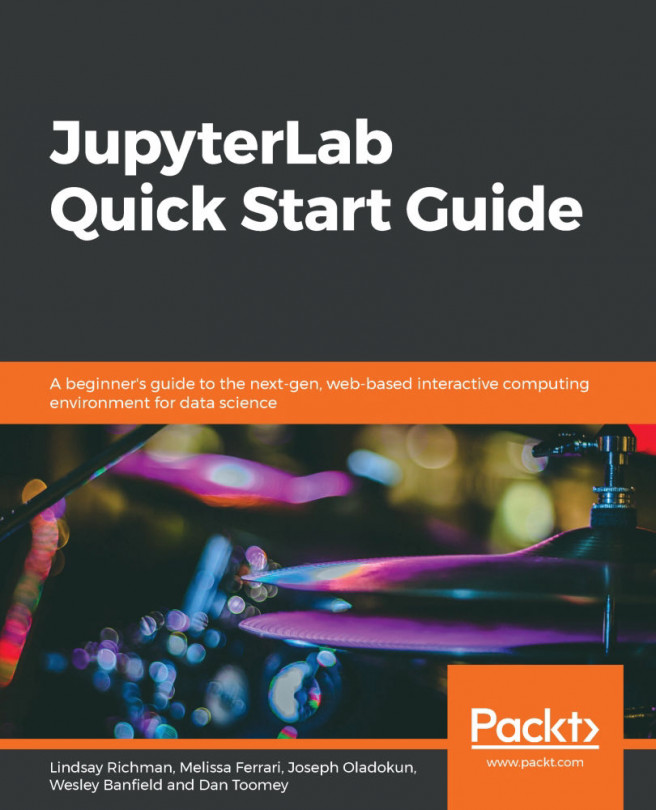There are a number of text conventions used throughout this book.
CodeInText: Indicates code words in text, database table names, folder names, filenames, file extensions, pathnames, dummy URLs, user input, and Twitter handles. Here is an example: "The default filename, untitled1.txt, is editable."
A block of code is set as follows:
var mycell = Jupyter.notebook.get_selected_cell();
var cell_config = mycell.config;
var code_patch = {
CodeCell:{
cm_config:{indentUnit:2}
}
}
cell_config.update(code_patch)
Any command-line input or output is written as follows:
jupyter trust /path/to/notebook.ipynb
Bold: Indicates a new term, an important word, or words that you see onscreen. For example, words in menus or dialog boxes appear in the text like this. Here is an example: "There are three tabs that are displayed: Files, Running, and Clusters."
Warnings or important notes appear like this.
Tips and tricks appear like this.



































































